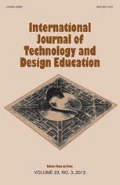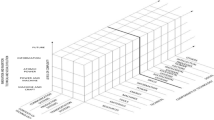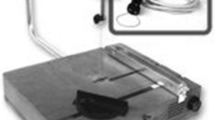Abstract
In this article, an instrument for assessing upper secondary school students’ levels of technological literacy is presented. The items making up the instrument emerged from a previous study that employed a phenomenographic research approach to explore students’ conceptions of technology in terms of their understanding of the nature of technology and their interaction with technological artefacts. The instrument was validated through administration to 1,245 students on completion of their 12 years of formal schooling. A factor analysis was conducted on the data and Cronbach alpha reliability co-efficients determined. The results show that a five-dimension factor structure (namely, artefact, process, direction/instruction, tinkering, and engagement) strongly supported the dimensions as developed during the original phenomenographic study. The Cronbach alpha reliability co-efficient of each dimension was satisfactory. Based on these findings, the instrument has been shown to be valid and reliable and can be used with confidence.
Similar content being viewed by others
References
Ankiewicz, P. (1995). The planning of technology education for South African schools. International Journal of Technology and Design Education, 5, 1–10.
Ardies, J., De Maeyer, S., & Gijbels, D. (2013). Reconstructing the pupils’ attitude toward technology—Survey. Design and Technology Education: An International Journal, 18(1), 8–19.
Bame, E. A., & Dugger Jr, W. E. (1989). Pupils’attitude towards technology: PATT-USA. In F. de Klerk Wolters, I. Mottier, J. H. Raat & M. J. de Vries (Eds.), PATT 4 conference: Teacher education for school technology (pp. 309–319).
Boser, R., Palmer, J. D., & Daugherty, M. K. (1998). Students attitudes toward technology in selected technology programs. Journal of Technology Education, 10(1), 4–19.
Cohen, L., Manion, L., & Morrison, K. (2000). Research methods in education (5th ed.). London: RoutledgeFalmer.
Collier-Reed, B. I. (2006). Pupils’ experiences of technology: Exploring dimensions of technological literacy. Unpublished PhD. University of Cape Town.
Collier-Reed, B. I., Case, J. M., & Linder, C. (2009). The experience of interacting with technological artefacts. European Journal of Engineering Education, 34(4), 295–302.
Collier-Reed, B., & Ingerman, A. (2013). Phenomenography: From critical aspects to knowledge claim. In M. Tight & J. Huisman (Eds.), International perspectives on higher education research, 9, 243–260.
Compton, V. J., & Harwood, C. D. (2003). Enhancing technological practice: An assessment framework for technology education in New Zealand. International Journal of Technology and Design Education, 13(1), 1–26.
Dakers, J. R. (2006). Introduction: Defining technological literacy. In J. R. Dakers (Ed.), Defining technological literacy: Towards an epistemological framework. New York: Palgrave Macmillan.
Dall’Alba, G., Walsh, E., Bowden, J., Martin, E., Masters, G., Ramsden, P., et al. (1993). Textbook treatments and students’understanding of acceleration. Journal of Research in Science Teaching, 30, 621–635.
Department of Education. (1997). Curriculum 2005: Specific outcomes, assessment criteria, range statements. Grades 1–9.
Department of Education. (2002). Revised national curriculum statement grades R-9. Technology. Pretoria: Government Printers.
Department of Education. (2011). Curriculum and assessment policy statement (CAPS). Technology. Grades 7–9.
Field, A. (2005). Discovering statistics using SPSS: Sex, drugs and rock ‘n roll. London: Sage.
Gagel, C. (1995). Technological literacy: A critical exposition and interpretation for the study of technology in the general curriculum. Doctoral Dissertation, University of Minnesota, 1995. Dissertation Abstracts International, 56, 2208A. (University Microfilms No. 9534116).
Gagel, C. W. (1997). Literacy and technology: Reflections and insights for technological literacy. Journal of Industrial Teacher Education, 34(3), 6–34.
Garmire, E., & Pearson, G. (2006). Tech tally: Approaches to assessing technological literacy. Washington, DC: National Academies Press.
Ingerman, Å., & Collier-Reed, B. I. (2011). Technological literacy reconsidered: A model for enactment. International Journal of Technology and Design Education, 21, 137–148.
International Technology Education Association (ITEA). (2000). Standards for technological literacy. Virginia: International Technology Education Association.
Jenkins, E. W. (1997). Scientific and technological literacy: Meanings and rationales. In E. W. Jenkins (Ed.), Innovations in science and technology education (Vol. VI). Paris: UNESCO.
Jones, A., Bunting, C., & De Vries, M. J. (2013). The developing field of technology education: A review to look forward. International Journal of Technology and Design Education, 23, 191–212.
Kline, P. (1999). The handbook of psychological testing. London: Routledge.
Lewis, T. (1999). Research in technology education—Some areas of need. Journal of Technology Education, 10(2), 41–52.
Luckay, M. B., & Collier-Reed, B. (2011a). Admitting students with the best chance of success: Technological literacy and the technological profile inventory. Proceedings of the South African society of engineering education. University of Stellenbosch: Cape Town. 10–12 August 2011.
Luckay, M. B., & Collier-Reed, B. (2011b). The development and validation of an instrument: The technological profile inventory—to determine first year university students’ technological literacy in South Africa. Proceedings of the international conference for educational research and innovation. Madrid, Spain. 14–16 November 2011, pp. 764–772.
Luckay, M. B., & Collier-Reed, B. (2012). Comparing the technological literacy of pre-service teachers and secondary school students in South Africa. Proceedings of EDULEARN12 conference, 2nd–4th July 2012, Barcelona, Spain, pp. 635–642.
Marton, F. (1986). Phenomenography: A research approach to investigating different understandings of reality. Journal of Thought, 21, 28–49.
National Research Council (NRC). (1996). National science education standards. Washington, DC: National Academy Press.
Noble, D. (1991). Social choice in machine design: The case of automatically controlled tools. In H. Mackay, M. Young, & J. Beynon (Eds.), Understanding technology in education. London: Falmer Press.
Nunally, J. C. (1978). Psychometric theory. New York: McGraw-Hill.
Potgieter, C. (2012). Linking learning activities and assessment activities to learning outcomes and assessment standards when teaching technology: A case study. International Journal of Technology and Design Education,. doi:10.1007/s10798-012-9226-4.
Prosser, M., & Trigwell, K. (1999). Understanding learning and teaching: The experience in higher education. Buckingham: SRHE and Open University Press.
Prosser, M., & Trigwell, K. (2004). Development and use of the approaches to teaching inventory. Educational Psychology Review, 16(4), 409–424.
Prosser, M., & Trigwell, K. (2006). Confirmatory factor analysis of the approaches to teaching inventory. British Journal of Educational Psychology, 76, 405–419.
Pudi, T. I. (2007). Understanding technology education from a South African perspective. Pretoria: Van Schaik.
Raat, J. H., & de Vries, M. J. (1985). What do 13-year old pupils think about technology? The conception of and the attitude towards technology of 13-year old girls and boys. Paper presented at the science and technology education and future human needs conference of the International Council of Scientific Unions, Bangalore.
Rose, L. C., Gallup, A. M., Dugger, W. E, Jr, & Starkweather, K. N. (2004). The second installment of the ITEA/Gallup poll and what it reveals as to how Americans think about technology. Technology Teacher, 64(1), 1.
Rose, L. C., & Jr Dugger, W. E. (2002). ITEA/Gallup poll reveals what Americans think about technology. A report of the survey conducted by the Gallup Organization for the International Technology Education Association. Technology Teacher, 61(6 insert), 1–8.
Saskatchewan Education. (2001). 1999 Provincial learning assessment in technological literacy, (p. 69).
Stevens, A. (2005). Technology teacher education in South Africa. PATT-15: Technology education and research: Twenty years in retrospect (2005) (cited 03 July 2013). www.iteaconnect.org/Conference/PATT/PATT15/Stevens.pdf.
Tabachnick, B. G., & Fiddell, L. S. (2007). Using multivariate statistics. Needum Heights, MA: Pearson/Allyn and Bacon.
Tamir, P. (1991). Factors associated with the acquisition of functional knowledge and understanding of science. Research in Science and Technological Education, 9(1), 17–37.
Trigwell, K. (2000). Phenomenography: Variation and discernment. In C. Rust (Ed.), Improving student learning, Proceedings of the 1999 7 th International Symposium, Oxford Centre for Staff and Learning Development (pp. 75–85). Oxford: Oxford.
Trigwell, K. (2002). Approaches to teaching design subjects: A quantitative analysis. Art, Design Communication in Higher Education, 1, 69–80.
Van Rensburg, S. J., Myburgh, C. P. H., & Ankiewicz, P. (1996). Curriculum development for technology in South Africa: Gender issues. Paper presented at the GASAT 8 conference, Ahmedabad, India, 5–10 January.
Volk, K., Yip, W. M., & Lo, T. K. (2003). Hong Kong pupils’ attitude toward technology: The impact of design and technology programs. Journal of Technology Education, 15(1), 48–63.
Waetjen, W. B. (1993). Technology education. Journal of Technology Education, 4(2), 5–10.
Williams, P. J. (2005). Technology education in Australia. Proceedings of the pupils’ attitude toward science conference 15, the Netherlands, April 2005.
Acknowledgments
The material is based upon the work supported by the University Research Committee Accredited Research Group Fellowship from the University of Cape Town. Any opinion, findings, conclusions, or recommendations expressed in this material are those of the authors and do not necessarily reflect the views of University.
Author information
Authors and Affiliations
Corresponding author
Appendix: Questionnaire
Appendix: Questionnaire
-
1.
Technology is a person making something to solve a problem and improve quality of life.
-
2.
I would rather play around with a technological thing than waste time first reading instructions about how to do it.
-
3.
A CD is only technology when you put the CD into a computer and then copy music onto it.
-
4.
I always ask permission before I use some new technological thing in case I break it.
-
5.
It is fun figuring out how technological things work without being given instructions to follow.
-
6.
With a new technological thing, I play with it a bit and read the manual a bit—whichever helps me the most.
-
7.
When I see a new technological thing, the first thing I want to do is play around with it to see what it can do.
-
9.
Technology is an idea that has been put into place by someone to help people.
-
10.
Technology is about using scientific knowledge to make something.
-
11.
I would rather get someone else to work a technological thing. I might get it wrong or mess it up.
-
12.
Only with instructions, I would be able to find how to do what I want with a technological thing.
-
13.
To find new features on the technological thing and understand it better, manuals often help if I can’t figure it out myself.
-
14.
Technology is all about computers and other electronic and electrical things like that.
-
15.
Technology is making use of knowledge people have about something and using this to solve a problem.
-
16.
Only if someone first shows me how to do something with a technological thing, then I can use it.
-
17.
When using technological things, instructions tell me exactly what to do—and only then I can do it.
-
18.
Finding out how a technological thing works is easiest by reading the manual and playing around at the same time.
-
19.
Technology is using knowledge and skill to develop some product.
-
20.
I would rather watch someone work with a complicated technological thing instead of trying to do it myself.
-
21.
I like to understand a technological thing by playing with it as well as by reading more about it.
-
22.
Things with complicated wires and parts that you don’t understand are technology.
-
23.
Something is technology because a person had a plan that was put into practice by making it.
-
24.
I always seem to do something wrong when I try to use technological things.
-
25.
A television is technology only when you watch a movie on it using signals from the air.
-
26.
Technology is about solving a problem.
-
27.
An amplifier or CD player becomes technology when it is switched on.
-
28.
Technology is the planning and research of something and then the making of it.
-
29.
A washing machine thrown on a rubbish dump with no motor or wires is no longer technology. It is just a thing.
-
30.
I can usually use technological things only when I follow instructions.
Rights and permissions
About this article
Cite this article
Luckay, M.B., Collier-Reed, B.I. An instrument to determine the technological literacy levels of upper secondary school students. Int J Technol Des Educ 24, 261–273 (2014). https://doi.org/10.1007/s10798-013-9259-3
Accepted:
Published:
Issue Date:
DOI: https://doi.org/10.1007/s10798-013-9259-3




